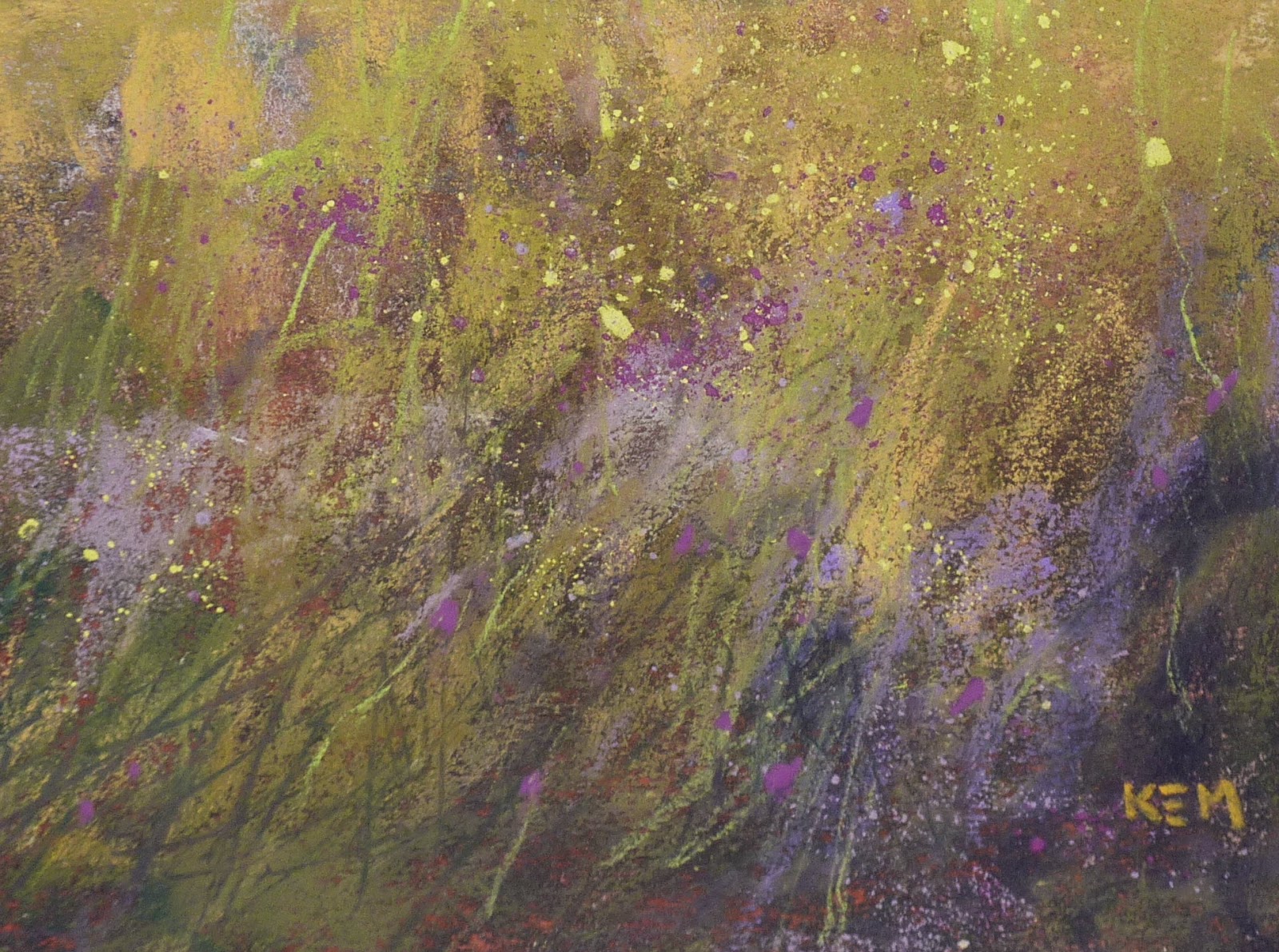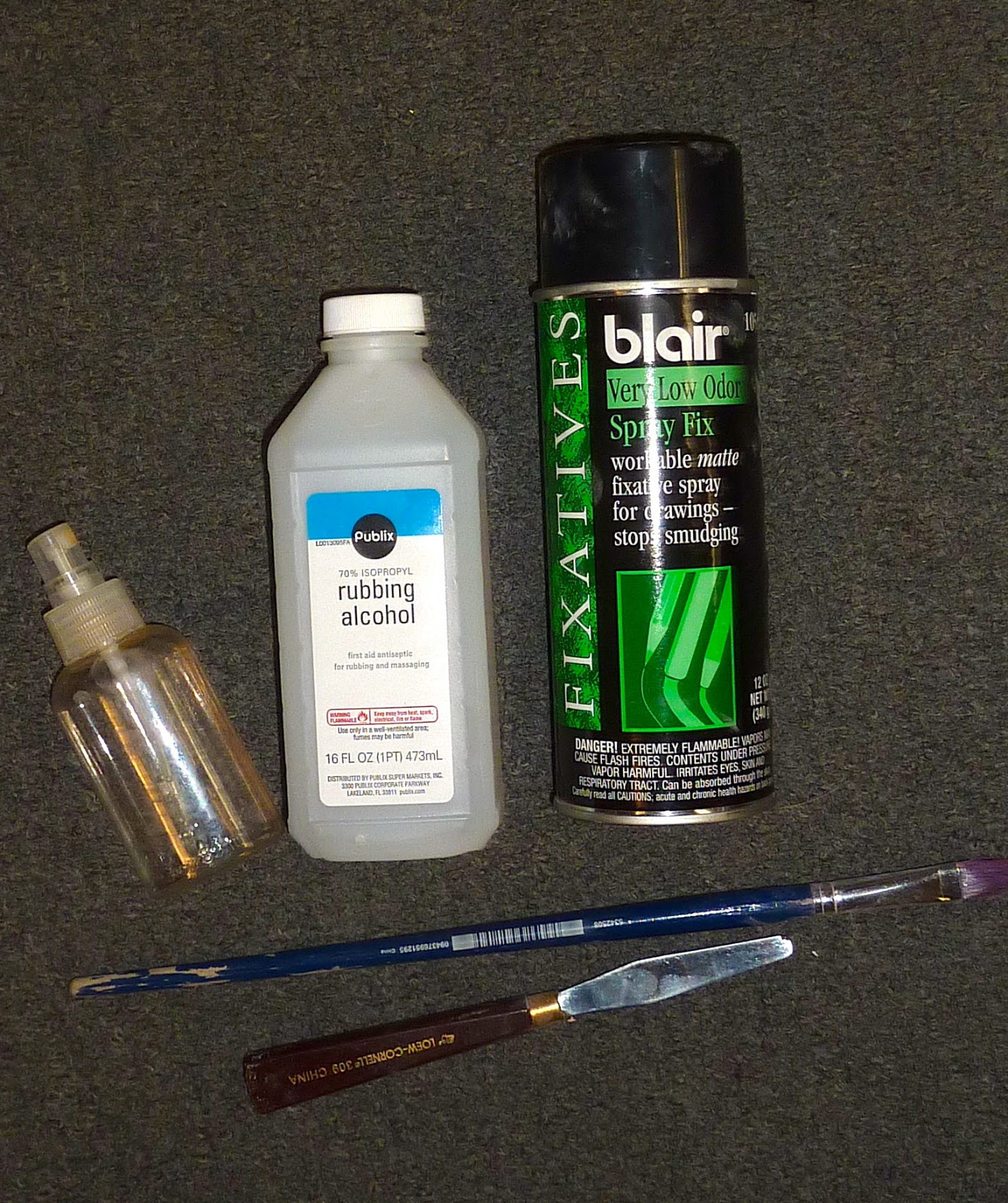 |
| 'Marsh Madness' 8x10 pastel ©Karen Margulis |
Dark. Warm. Simple. I love this type of foreground. It can be a bit mysterious. It should have some interest but not so much that is keeps you there. It should lead you out of the darkness and into the light....into the rest of the painting. Like the opening chapter of a good mystery story it should entice you to read more and not give away the ending. I call them DWS foregrounds. Dark, warm and simple.
It should be easy to create a foreground that doesn't have too much in it. But I find it to be a challenge. Sometimes I get lucky with a few successful strokes and if I recognize it in time I can leave it alone. But more often than not I end up overworking the foreground and put in too much stuff.
How can we simplify an overworked foreground? Read on for some ideas.
 |
| close up detail of foreground stuff |
 |
| some tools of the trade |
- The first thing I do for an overworked foreground is brush out some of the stuff with a stiff brush. Sometimes this is enough. We tend to want to add things to make it better when we really should be taking things away!
- If that isn't enough I will turn to workable fixative or rubbing alcohol. A light spray of fixative or a spritz of rubbing alcohol will darken and fix the pastel so that subsequent layers will go on fresh and clean. The added bonus is a nice rich dark under the pastel and the pastel will have more of a textured look when applied over 'fixed' areas.
- When I apply more pastel I am careful to make sure every mark I make has a purpose. I try to create a suggested pathway into the painting. I do this with value, color and details. It is easy to fall into the trap of putting in too much stuff....so I slow down and try to have restraint!
- Often it takes more than one layering of fixative and pastel. I have often used several layers of both until I am happy with the results. I want it to be simple and yet complex. (see photo)
- Once the pastel is built up I sometimes have it thick enough to scrape it to reveal some of the under layers. This adds to the texture and interest without being too obvious.
- I will sometimes use the dusting technique using a palette knife to shave pastel dust to create foreground interest.
DISCLAIMER: If you are going to try the workable fixative I recommend you practice with the spray before you spray the painting. Once you have the flow going then spray the painting. Spray lightly and not too close and keep the can moving. Be sure to cover any areas of the painting that you don't want to spray! This isn't a perfect technique and you may end up with too much spray or even spotty spray so be prepared to experiment!




No comments:
Post a Comment